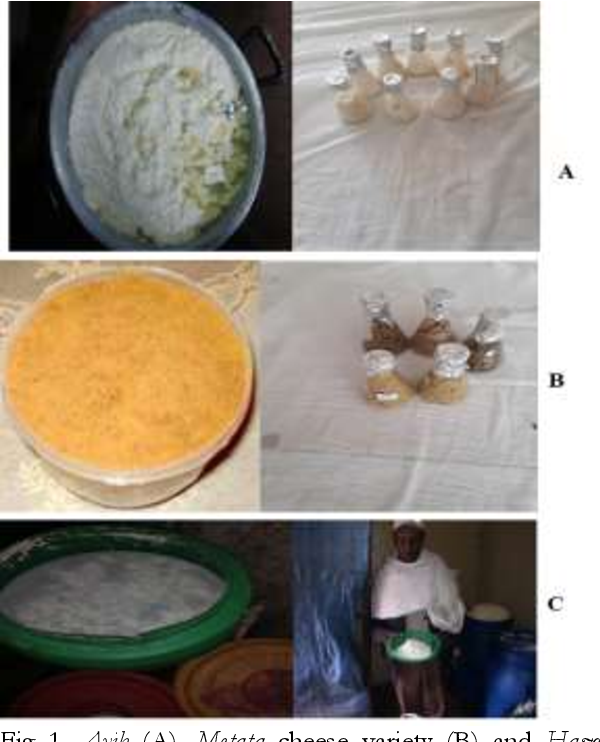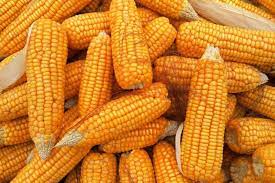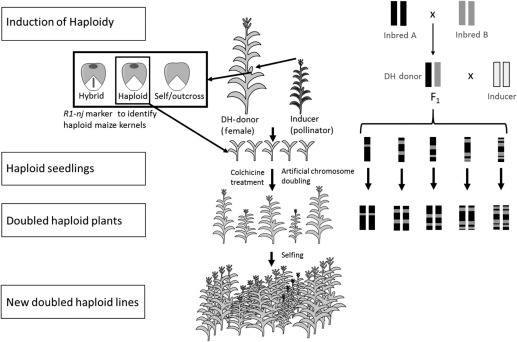Design, Manufacturing and Testing of Composite Type Cylinder Sorghum Thresher
Downloads
Background: Sorghum cultivars of widely diverse types of head structures and grain properties are produced in Ethiopia. These require different key threshing actions of various functional elements. But sorghum threshers with cylinder consisting of different functional elements are lacking in the country.
Objective: The study was aimed to design, manufacture, and test the functionality of a sorghum thresher developed with a composite type cylinder using a selected sorghum variety.
Materials and Methods: Fundamental theories, basic principles of design analysis and methods reviewed from the already published research output were followed to design the thresher. The produced prototype was tested at different levels of concave clearance, cylinder speed and feed rate factors laid in 2x32 factorial design with 3 replications using the sorghum variety of Gubbiye.
Results: The test results indicated increasing mean threshing efficiency from 96.15% to 99.52%, an average cleaning efficiency of 95.43% and an average unthreshed grain loss of 1.42%. Grand mean of 0.77% grain damage was observed with the means ranging from 0.25% to 1.07%. Grains remained with glumes indicated the highest mean of 4.15% at 400 rpm that was reduced to 2.25% at 600 rpm.
Conclusion: The results revealed an average of 98.58% threshing efficiency, grain damage of 0.77%, and 3.16% grains remaining in glumes from the test made on Gubbiye variety. This implies that a designed thresher is efficient which can be used by farmers for threshing grains of sorghum varieties in the country.
Abdulaziz Teha, Takkalign Bedada, Jamal Nur, Ibsa Aliyi and Kibret Ketema. 2020. Pre-extension
demonstration and evaluation of engine-driven sorghum thrasher in the selected AGP-II
districts of Harari Region and Dire Dawa administration. Food Science and Quality
Management, 97: 29‒32.
Abich, S.O. 2018. Optimization of threshing
performance of a spike tooth sorghum
threshing unit. MSc Thesis, Egerton University,
Kenya. Pp. 80.
Abich, S.O., Ngunjiri, G.M. and Njue, M.R. 2017. Effect
of cylinder diameter and peripheral speed on the
performance of a sorghum thresher. IOSRJournal of Agriculture and Veterinary Science, 10(8):
‒50.
Ali Mohammed and Abrham Tadesse. 2018. Review of
major grains postharvest losses in Ethiopia and
customization of a loss assessment
methodology. USAID/Ethiop Agriculture,
knowledge Learning, Documentation and
Policy Project. Addis Ababa, Ethiopia. https://pdf.usaid.gov/pdf_docs/PA00TGW5. pdf. Accessed on 17 May 2022.
Ali, K., Zong, W., Tahir, H., Ma, L. and Yang, L. 2021.
Design, simulation and experimentation of an
axial flow sunflower-threshing machine with an
attached screw conveyor. Applied Science, 11(14):
‒13.
Aung, L., Theint, E. and Win, H. 2019. Structural analysis
of shafts and bearings for paddy thresher. Iconic
Research and Engineering Journals, 3(1): 385‒390.
Azharuddin, K., Mir, S., Narasimhan, M. and Kumar, G.
Design and fabrication of sunflower seed
extracting machine. International Journal of Latest
Technology in Engineering, Management and Applied
Science, 5(6): 90–97.
BANDO Chemical Industry Ltd. 2018. Power
Transmission Products: V-Belt Design Manual,
Version 2018.
https://portalimages.blob.core.windows.net/pr
oducts/pdfs/syofijri_Bando-Belt-ProductOverview.pdf. Accessed on 19 February 2021.
Bosoi, E.S., Verniaev, O.V., Smirnov, I.I. and Sultan,
E.G. 1990. Theory, Construction and
Calculations of Agricultural Machines. Oxonian
press, London. Pp. 810.
Chavoshgoli, E., Abdollahpour, S. and Ghasemzadeh, H.
Designing, fabrication and evaluation of
threshing unit for edible sunflower. Agricultural
Engineering International: CIGR Journal, 21(2): 52–
CSA (Central Statistical Agency). 2020. The federal
democratic republic of Ethiopia central
statistical agency agricultural sample survey
/20. Report on area and production of
major crops. Statistical Bulletin, 587. Addis
Ababa, Ethiopia. Pp. 137.
CSA (Central Statistical Agency). 2021. The federal
democratic republic of Ethiopia central
statistical agency agricultural sample survey
/21. Report on area and production of
major crops. Statistical Bulletin, 590. Addis
Ababa, Ethiopia. Pp. 143.
El-Fakhrany, W.B., Shalaby, S.A. and El-Balkimy, W.M.
Developing a unit for chaff bagging
during threshing. Journal of Soil Science and
Agricultural Engineering, 8(2): 49‒56.
El-Sharabasy, M.A. and Ali, M.M. 2007. Development of
a local threshing machine suits for threshing
black seed (nigella sativa). Misr Journal of
Agricultural Engineering, 24(4): 699‒724.
Ermias Melkamu. 2020. Development of a motor driven
sorghum thresher. MSc Thesis, Bahir Dar
University, Ethiopia. Pp. 146.
FAO (Food and Agriculture Organization). 2017.
Postharvest loss assessment of maize, wheat,
sorghum and haricot bean. A study conducted
in fourteen selected woredas of Ethiopia under
the project -GCP/ETH/084/SWI.
https://www.fao.org/EthiopiaBaseline_PHL_food_loss assesment_reportv25jan18_003_pdf. Accessed on 16 September
FAO (Food and Agriculture Organization). 2020. Crops
and livestock products. FAOSTAT Database.
https://www.fao.org/faostat/en/%3f#data/Q
CL. Accessed on 15 June 2022.
Frank, P.B. 1998. Fan Hand Book: Selection, Application and
Design. McGraw Hill Company Inc., New York.
Pp. 640.
Husen Abagisa, Takka Tesfaye and Dubbale Befikadu.
Modification and testing of replaceable
drum multicrop thresher. International Journal of
Sciences: Basic and Applied Research, 23(1): 242‒
Idris, S.I., Mohammed, U.S., Suleiman, M.L. and Sale,
N.A. 2018. Modification and performance
evaluation of IAR multi crop thresher for
sorghum threshing. BAYERO Journal of
Engineering and Technology, 13(1): 98‒108.
Khurmi, R.S. and Gupta, J.K. 2005. A Textbook of Machine
Design. 14th edition. Eurasia Publishing House
PVT. Ltd., New Delhi. Pp. 1251.
Klenin, N.I., Popov, I.F. and Sukun, V.A. 1985.
Agricultural machines: Theory of operation, computation
of controlling parameters and the conditions of operation.
Amerind Publishing Co. PVT. Ltd., New Delhi.
Pp. 633.
Korpella, S.A. 2011. Principles of turbomachinery. John Wiley
and Sons Inc., New Jersy. Pp. 467.
Masresha Fetene, Okori, P., Samuel Gudu, Mneney, E.E.
and Kasahun Tesfaye. 2011. Delivering new
sorghum and finger millet innovations for food
security and improving Liveli-hoods in Eastern
Africa. International Livestock Research
Institute (ILRI), Nairobi, Kenya. Pp. 45.
Mohtasebi, S., Behroozilar, M., Alidadi, J. and Besharat,
K. 2006. A new design for grain combines
thresher. International Journal of Agriculture and
Biology, 8(5): 680–683.
Muhammad, U., Abubakar, L., Isiaka, M. and Davies,
R.M. 2013. Design and evaluation of a cleaning
machine. Applied Science Report, 1(3): 62‒66.
Olaoye, J.O., Oni, K.C. and Olaoye, M.O. 2011.
Computer applications for selecting operating
parameters in a stationary grain crop thresher.
Journal of Agricultural Technology, 7(1): 39‒56.
Sabar, S.S., Swain, S.K., Behera, D., Rayaguru, K.,
Mohapatra, A.K., et al. 2020. Moisture dependent physical and engineering properties
of sorghum grains. International Journal of Current
Microbiology and Applied Sciences, 9(8): 2365‒2375.
Sale, N.A., Muhammed, U.S., Dalha, I.B. and Idris, S.I.
An improved IAR sorghum thresher.
Agricultural Engineering International: CIGR Journal,
(3): 119‒126.
Sale, N.A., Muhammed, U.S., Gwarzo, M.A. and Idris,
S.I. 2017. Modification and performance
evaluation of cleaning system for IAR sorghum
thresher. Journal of Engineering and Technology, 2(2):
‒94.
Samuel Adimasu, Badaso Taye, Wondwossen Tsegaye,
Oumar Taha, Mesfin Ketama and Fikadu Chala.
Dissemination, adoption and impacts of
multi-crop threshers in Ethiopia: Experience of
Sasakawa Global-2000. Technical Report, No.
Addis Ababa, Ethiopia. Pp. 49.
Schobeiri, M. 2010. Fluid Mechanics for Engineers: A
Graduate Textbook. Springer, Berlin. Pp. 517.
Simonyan, K., Yiljep, Y. and Mudiare, O. 2006. Modelling
the grain cleaning process of a stationary
sorghum thresher. Agricultural Engineering
International: the CIGR Ejournal, 8: 1‒17.
Sisay Debebe. 2022. Post-harvest losses of crops and its
determinants in Ethiopia: tobit model analysis.
Agriculture and Food Security, 11(3): 1‒8.
Suleiman, M., Obadiah, K. and Atiku, L. 2016. Design of
a centrifugal blower for a 400kg rotary furnace.
American Journal of Engineering Research, 5(10):
‒186.
Takkalign Bedada. 2018. Improvement of IITA multicrop thresher for sorghum threshing.
International Journal of Pure and Applied Research,
(1): 15‒26.
Takkalign Bedada. 2021. Improvement of the engine
driven sorghum thresher by incorporating grain
cleaning system. The American Journal of Applied
Sciences, 3(6): 1‒7.
Yang, R., Chen, D., Zha, X., Pan, Z., Shang, S. 2021.
Optimization design and experiment of earpicking and threshing devices of corn plot
kernel harvester. Agriculture, 11:1‒23.
Yayock, E., Shebayan, J. and Bature, B.J. 2020.
Development of a grain cleaning machine for
sorghum and millet. International Journal of
Engineering Science Invention, 9(8): 35‒42.
Zewdu Abdi. 2007. Aerodynamic properties of Teff grain
and straw material. Journal of Biosystems
Engineering, 98(3): 304‒309.
Copyright (c) 2024 Birhanu Atomsa Gurracho, Abebe Fanta Bedie, Yetenayet Bekele Tola, Solomon Abera Habtegabriel, Sirawdink Fikreyesus Forsido

This work is licensed under a Creative Commons Attribution-NoDerivatives 4.0 International License.
- I am authorized by my co-authors to enter into these arrangements.
- I warrant, on behalf of myself and my co-authors, that:
- the article is original, has not been formally published in any other peer-reviewed journal, is not under consideration by any other journal and does not infringe any existing copyright or any other third party rights;
- I am/we are the sole author(s) of the article and have full authority to enter into this agreement and in granting rights to Springer are not in breach of any other obligation;
- the article contains nothing that is unlawful, libellous, or which would, if published, constitute a breach of contract or of confidence or of commitment given to secrecy;
- I/we have taken due care to ensure the integrity of the article. To my/our - and currently accepted scientific - knowledge all statements contained in it purporting to be facts are true and any formula or instruction contained in the article will not, if followed accurately, cause any injury, illness or damage to the user.
- I, and all co-authors, agree that the article, if editorially accepted for publication, shall be licensed under the Creative Commons Attribution License 4.0. If the law requires that the article be published in the public domain, I/we will notify Springer at the time of submission, and in such cases the article shall be released under the Creative Commons 1.0 Public Domain Dedication waiver. For the avoidance of doubt it is stated that sections 1 and 2 of this license agreement shall apply and prevail regardless of whether the article is published under Creative Commons Attribution License 4.0 or the Creative Commons 1.0 Public Domain Dedication waiver.
- I, and all co-authors, agree that, if the article is editorially accepted for publication in Haramaya Journals, data included in the article shall be made available under the Creative Commons 1.0 Public Domain Dedication waiver, unless otherwise stated. For the avoidance of doubt it is stated that sections 1, 2, and 3 of this license agreement shall apply and prevail.










